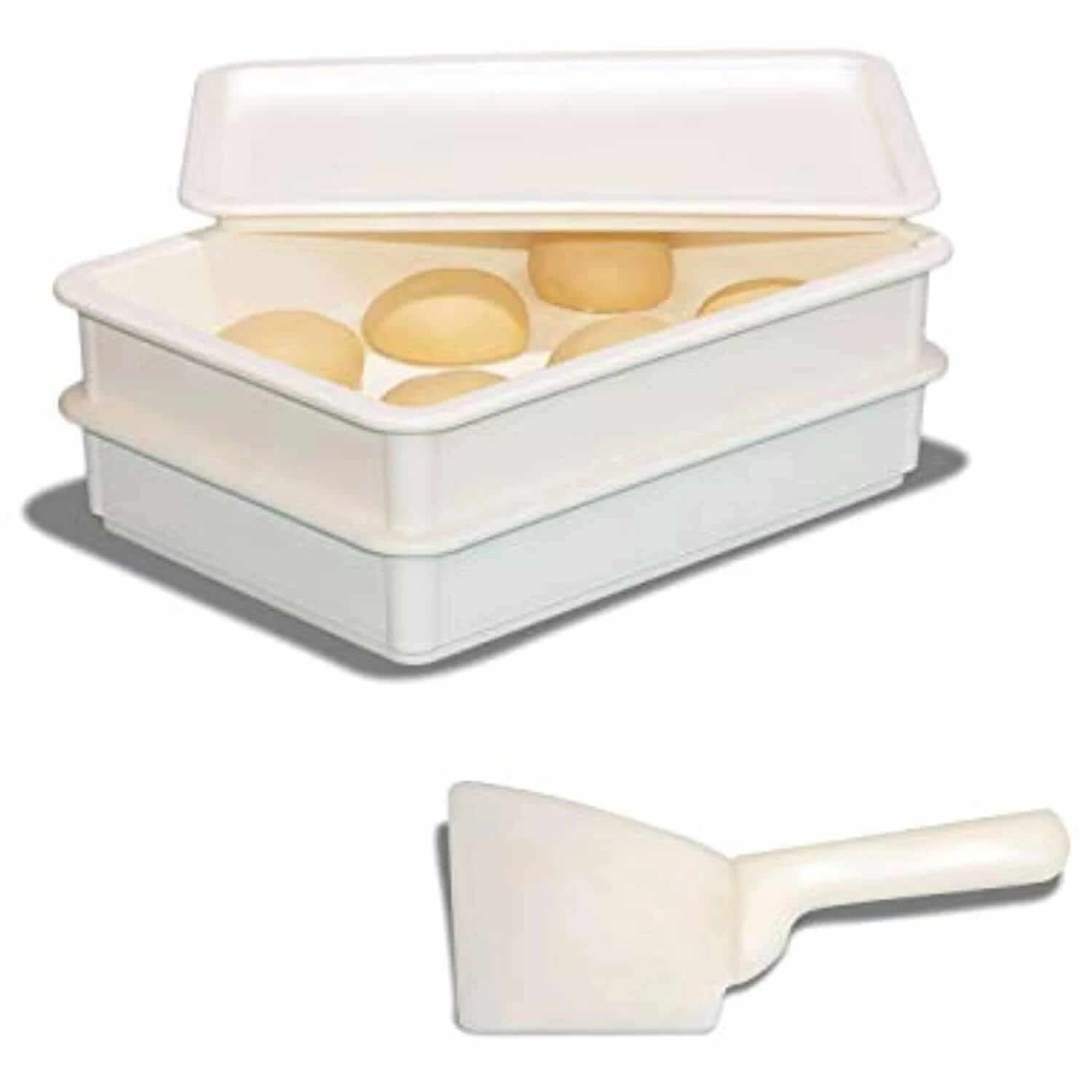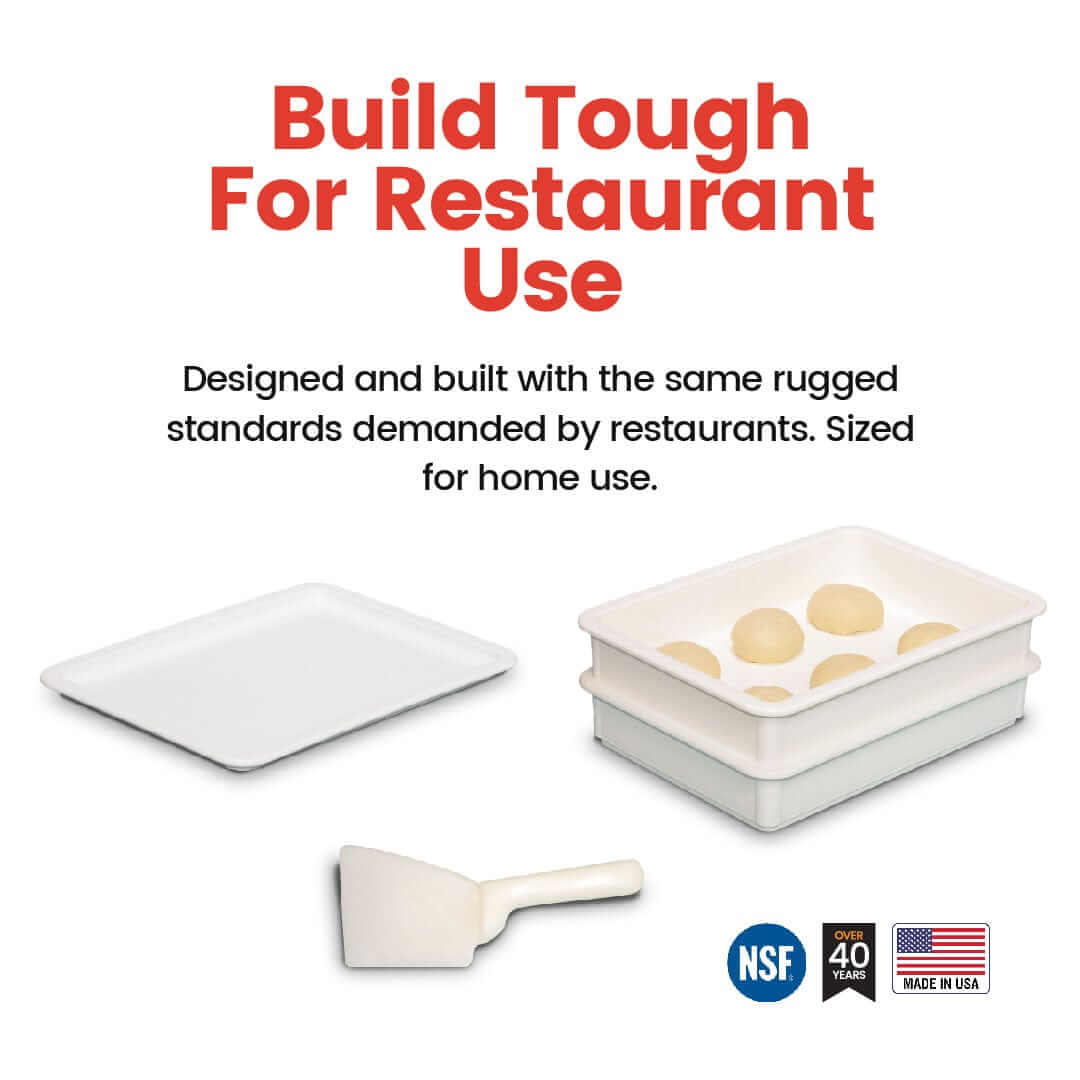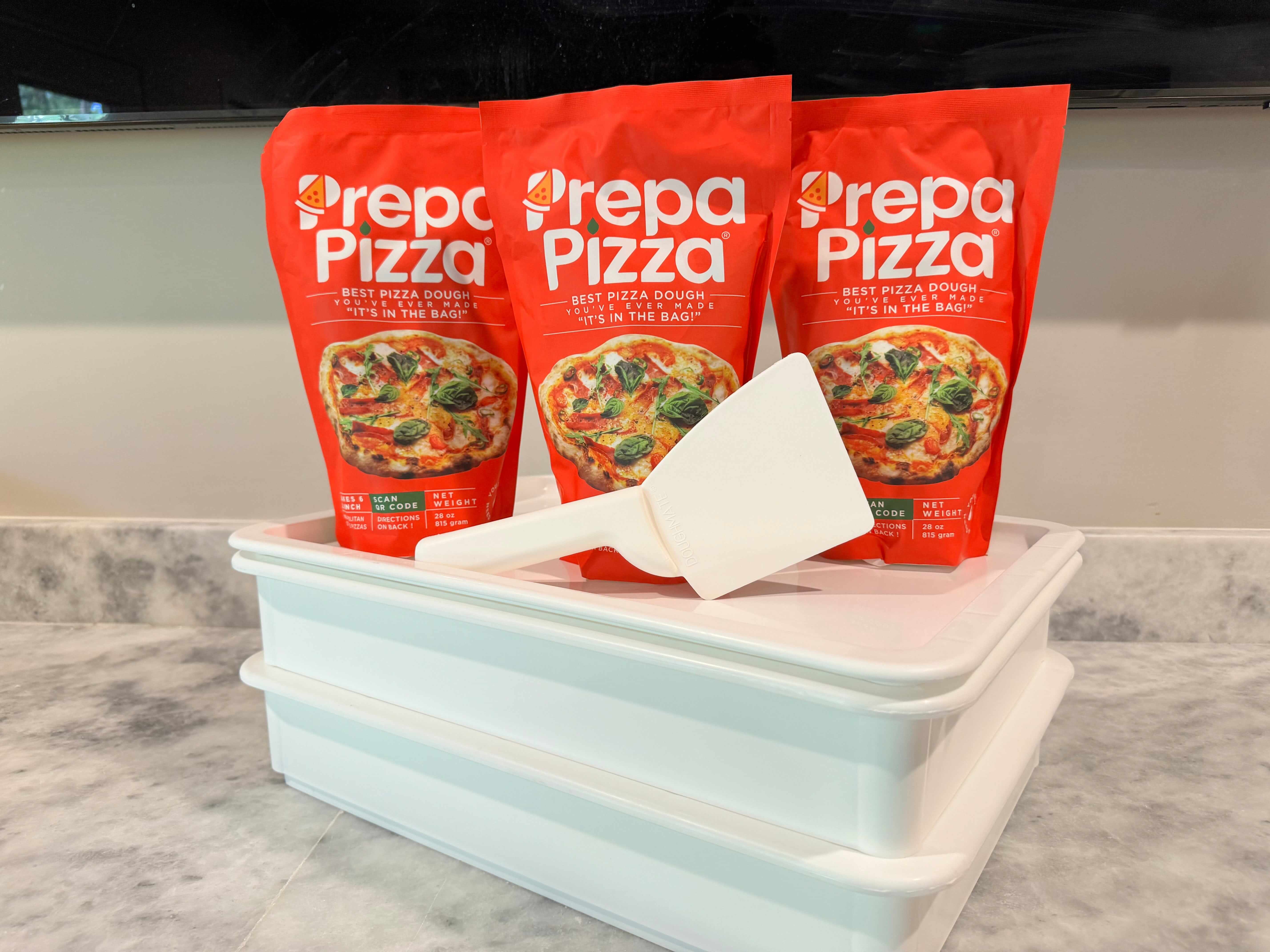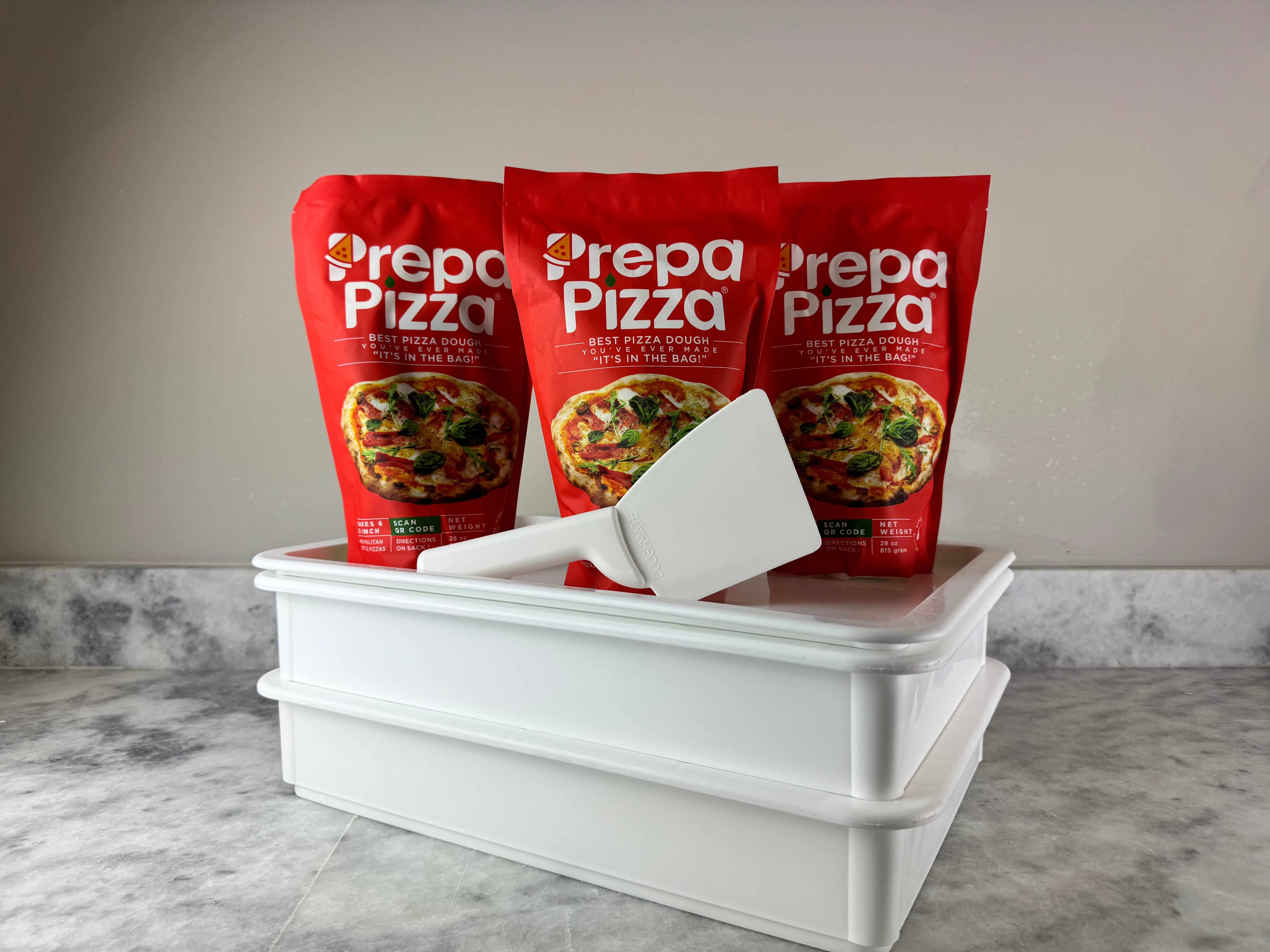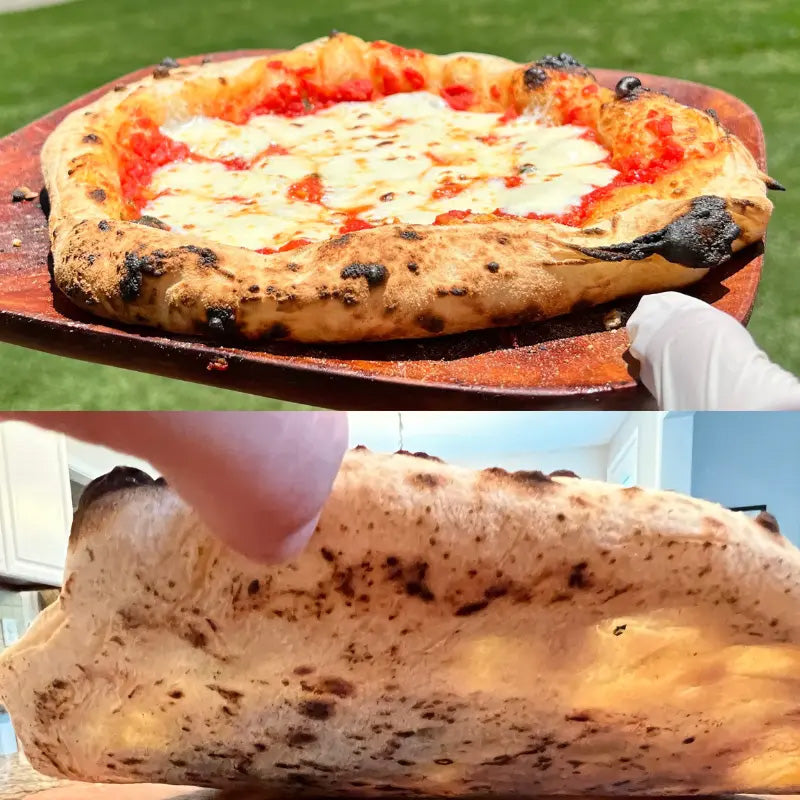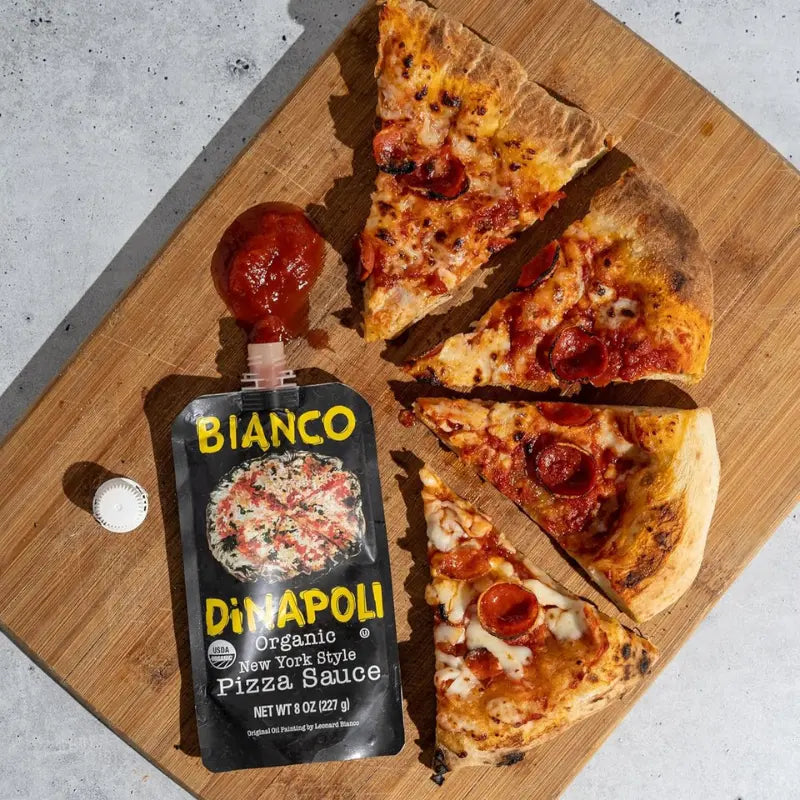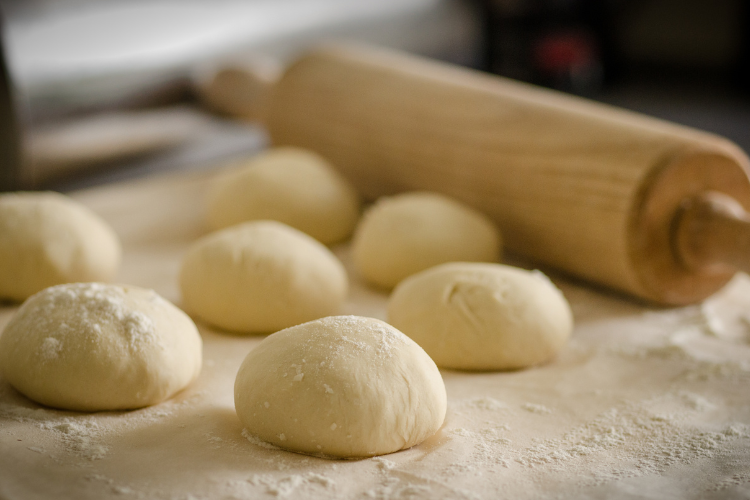
What Temperature to Bake Pizza with Fresh Dough for Optimal Crispiness and Flavor
When baking pizza with fresh dough, achieving the right temperature is crucial for a perfect crust. For the best results, preheat your oven to 475°F to 500°F. Using premium quality dough, like Prepa Pizza's premade dough, means you can easily replicate restaurant-quality pizza at home.
At these higher temperatures, you create an environment that allows the crust to rise beautifully while ensuring that the toppings are cooked perfectly. Many avid home cooks find that temperatures exceeding 450°F yield crispy results that rival those of a traditional pizza oven. Understanding the perfect baking temperature is the first step to mastering your homemade pizzas.
Experimenting with different temperatures can also lead to discovering your personal favorite level of doneness. As you perfect your technique, you'll appreciate how Prepa Pizza's dough enhances your baking experience, offering consistent quality every time you make a pizza.
Essential Baking Temperatures for Pizza with Fresh Dough
Baking pizza with fresh dough requires precision in temperature to achieve the ideal crust and toppings. Understanding the right temperature settings will help you maximize the quality of your homemade pizza using Prepa Pizza's premade dough, which is designed to deliver restaurant-quality results. You can explore more about this premium dough here.
Ideal Oven Temperature Range
For optimal baking of pizza, the ideal oven temperature range is between 450°F to 500°F (232°C to 260°C). This temperature allows your pizza to cook evenly and develop a crispy crust while keeping the toppings beautifully melted.
If you use a lower temperature, such as 400°F (204°C), the pizza will take longer to bake, which may result in a soggy crust and unevenly cooked toppings.
When using Prepa Pizza's dough, adhering to higher temperatures ensures that the gluten structure activates properly, enhancing the texture and flavor of your crust.
Impacts of Temperature on Pizza Crust
The temperature at which you bake your pizza significantly impacts the dough's rise and texture. Higher temperatures promote quick cooking, which is vital for creating a puffed-up, bubbly crust.
When baking at 500°F (260°C), the exterior of the dough forms a crust rapidly, trapping moisture and creating steam. This process enhances chewiness and develops flavor, resulting in a satisfying bite.
In contrast, baking at lower temperatures may lead to a denser, drier crust. If you're seeking the pizzeria-style pizza experience, maintaining the heat is key.
Differences Between Home and Professional Ovens
Home ovens can typically reach temperatures around 500°F (260°C), but their performance may differ from professional pizza ovens.
Professional ovens often exceed 800°F (427°C), allowing for faster cooking times, which results in a superior crust with charring and more complex flavors.
Using a pizza stone or steel in your home oven can mimic some of this effect by retaining heat and promoting a cleaner bake. Keeping your oven preheated for at least 30 minutes before baking can also improve results when using Prepa Pizza's dough.
Maintaining the right baking temperature is essential for crafting the perfect homemade pizza.
Preparing Fresh Dough for Optimal Baking Results
To achieve the best results when baking pizza with fresh dough, consider the hydration levels, shaping techniques, and the role of ingredients. Each factor contributes to a well-structured and flavorful crust.
Dough Hydration and Fermentation
Hydration is crucial in pizza dough. A higher water content enhances gluten development, leading to a lighter, airier crust. Aim for a hydration level of around 60-65% for optimal results.
Fermentation also plays a vital role. Allow your dough to rise at room temperature for 1-2 hours or refrigerate it for 24 hours. This slow fermentation improves flavor and texture. Using high-quality premade dough like Prepa Pizza ensures a proper balance of hydration and fermentation, preparing the dough for optimal baking.
Shaping Techniques for Perfect Crust
Proper shaping techniques can greatly affect your pizza's crust. Start by gently flattening the dough ball with your fingertips, focusing on the center while leaving a thicker border for the crust.
Use a rolling pin sparingly, as this can deflate the dough. Instead, stretch the dough by hand to maintain air pockets. For an evenly baked crust, ensure the thickness remains consistent throughout. This approach helps achieve that desired crispy yet chewy texture.
The Role of Ingredients in Temperature Adjustment
Ingredients directly influence how your dough reacts to heat. Salt not only enhances flavor but also controls fermentation. Use it wisely to balance taste without overrunning the dough's rise.
Olive oil lends moisture and flavor, helping the dough brown nicely in the oven. Incorporating high-quality flour contributes to gluten development, which is essential for a strong crust. Adjust your baking temperature based on the ingredients used; for instance, baking at 450-475°F helps achieve a well-cooked, golden crust.
Oven Types and Equipment for Baking Pizza
When baking pizza, the type of oven and the equipment you use can greatly impact the final product. Understanding your options helps you achieve the best results, whether you are using homemade dough or Prepa Pizza's premade pizza dough. Using quality ingredients is essential for the perfect pizza.
Conventional vs. Convection Ovens
Conventional ovens use radiant heat from their heating elements. They are suitable for baking pizzas at various temperatures. However, they often require longer cooking times and may produce uneven results without proper rotation of the pizza.
Convection ovens, on the other hand, have a fan that circulates hot air around the food. This leads to more consistent baking and a crisper crust. The circulating air allows for higher baking temperatures, usually ranging from 475°F to 500°F, which is ideal for pizzas. A convection oven may reduce cooking time by up to 25%, making it a more efficient choice for busy kitchens.
Advantages of Using a Pizza Stone
A pizza stone is a highly recommended tool for baking pizza. It absorbs moisture from the dough, creating a crispy crust that mimics traditional brick ovens. Using a stone allows your pizza to cook evenly by distributing heat effectively.
To use a pizza stone, preheat it in your oven for at least 30 minutes before placing the pizza on it. This preheating is crucial for achieving that desirable crispy texture. With Prepa Pizza's premade dough, you can easily prepare perfect pizzas from home. Simply roll out the dough and transfer it to the preheated stone for a delicious result.
Toppings and Their Effects on Baking Temperature
The choice and arrangement of toppings can significantly influence the baking temperature and final outcome of your pizza. Fresh dough, like that from Prepa Pizza, serves as a solid foundation for various toppings. Understanding how different ingredients behave during baking is crucial for achieving the perfect pizza.
Balancing Cheese and Sauce
A proper balance between cheese and sauce is vital for optimal baking. Cheese, particularly mozzarella, melts and browns well at high temperatures, while tomato sauce can release moisture. If too much sauce is applied, it can lead to a soggy crust.
Consider the following tips:
- Use less sauce if opting for extra cheese.
- Pre-cook sauce lightly with garlic to thicken it.
- Aim for equal coverage of cheese and sauce for even baking.
Keeping these factors in mind allows your pizza to bake evenly while ensuring a golden crust.
Meats, Vegetables, and Their Cooking Needs
Meats like sausage can release fat, affecting the baking process. It's advisable to pre-cook these toppings to reduce excess moisture. On the other hand, vegetables, particularly those with high water content like tomatoes, can also impact the final texture.
Here are some approaches:
- Sauté vegetables to release moisture before adding them.
- Distribute meat evenly to ensure thorough cooking and prevent sogginess.
By managing both meats and vegetables effectively, you ensure that your pizza remains crisp and flavorful.
Choosing the Right Cheese: Mozzarella and Parmesan
Cheese selection directly affects the final appearance and flavor of your pizza. Most pizzerias use mozzarella for its melting properties and stretchability, while parmesan adds a sharp, flavorful kick when sprinkled on top.
Consider these factors:
- Fresh mozzarella melts beautifully but can contain moisture. Opt for low-moisture options if aiming for a thinner crust.
- Parmesan should ideally be added in the last few minutes of baking for a rich flavor and a crunchy texture.
Together, these cheeses enhance both the taste and texture of your pizza, ensuring an enjoyable eating experience.
Baking Techniques and Timing for the Perfect Pizza
Achieving the ideal homemade pizza requires careful attention to baking techniques and timing. Using quality ingredients, like the premade dough from Prepa Pizza, can enhance your results. This dough is crafted to ensure a restaurant-quality experience for your homemade creations. For detailed guidance, check out their product page here.
Preheating and Baking Procedures
Preheating your oven is crucial for baking pizza. Aim for a temperature of 475°F to 500°F. This range allows for a crispy crust and perfectly melted cheese.
- Using a Pizza Stone: If you have a pizza stone, place it in the oven while preheating. This helps retain heat and can improve the baking process.
- Baking Time: Fresh pizza typically takes about 10-12 minutes at the recommended temperature. Keep an eye on the pizza; it’s done when the crust is golden and the cheese is bubbly.
For a delicious, homemade pizza experience, using Prepa Pizza's premade dough simplifies the process, allowing you to focus on toppings instead of dough-making.
Adjusting for Frozen vs. Fresh Dough
When baking frozen pizza, you'll need to alter your approach. For frozen dough, let it thaw in the refrigerator overnight for even cooking.
- Temperature: Maintain the oven temperature at 475°F. This ensures consistency whether you're using fresh or frozen options.
- Timing: Frozen pizzas usually require an additional 2-5 minutes of baking time compared to fresh dough.
Be prepared to adjust your baking time and keep a close watch as pizzas can go from perfect to overcooked quickly. Using Prepa Pizza’s fresh dough makes timing easier, giving you a head start toward a perfect pizza every time.
Frequently Asked Questions
Baking pizza with fresh dough involves specific temperatures and times for optimal results. Understanding these variables can ensure a perfectly cooked pizza every time, whether you're using your own dough or Prepa Pizza's premade dough, crafted for restaurant-quality results.
The following questions will address key aspects of baking pizza at home, focusing on temperature, cooking times, and tips for achieving the best crust.
What is the ideal oven temperature for baking a pizza with homemade dough?
The ideal oven temperature for baking pizza with fresh dough is typically around 475°F to 500°F. This high temperature helps achieve a crispy crust with a nicely melted cheese topping. If you use Prepa Pizza's premade dough, you can follow similar temperatures for best results.
How long should pizza with fresh dough be cooked in the oven?
Cooking time for pizza made with fresh dough usually ranges from 10 to 15 minutes. This varies based on the thickness of the crust and the toppings used. Keep an eye on the pizza to ensure the crust turns golden while the cheese bubbles.
Does the temperature vary for baking pizza if you use fresh versus store-bought dough?
Generally, the temperature remains consistent for both fresh and store-bought dough. However, fresh dough may require slightly more attention during baking, as it can cook faster due to its moisture content. Aim for around 475°F to 500°F for both types to achieve the best outcome.
What are the differences in baking time for pizzas at 350, 375, and 400 degrees Fahrenheit?
At 350°F, baking can take around 15 to 20 minutes, resulting in a softer crust. At 375°F, expect a cooking time of about 12 to 18 minutes. At 400°F, the pizza will cook in approximately 10 to 15 minutes, providing a preferable balance of crunch and moisture.
How can you tell when a pizza made with fresh dough is perfectly cooked?
A well-cooked pizza will have a golden-brown crust and melted cheese with slight bubbling. You can also check the bottom by lifting it slightly with a spatula—there should be a firm, golden base.
What adjustments should be made when cooking pizza dough in a convection oven compared to a conventional oven?
When using a convection oven, reduce the temperature by about 25°F since the fan circulates heat more evenly and efficiently. This adjustment allows for a quicker cooking time, ensuring an evenly baked pizza without burning the crust.




